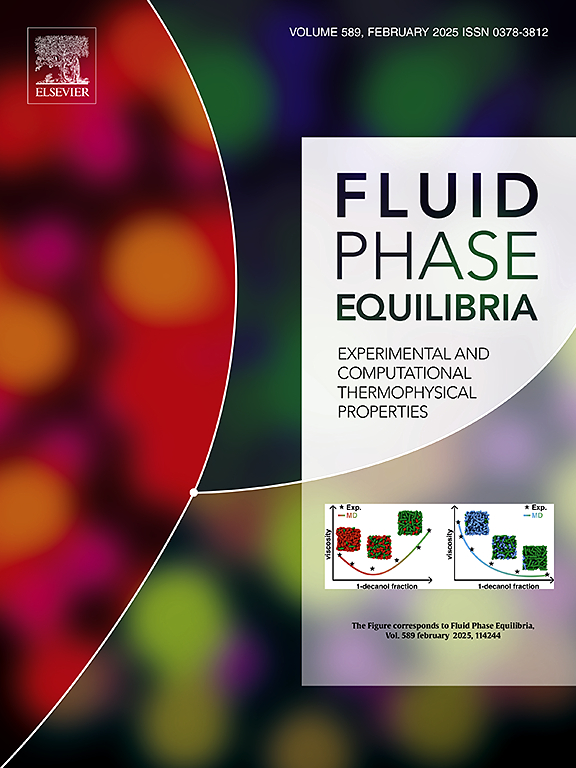Drying kinetics of polymer-based pharmaceutical formulations
IF 2.8
3区 工程技术
Q3 CHEMISTRY, PHYSICAL
引用次数: 0
Abstract
Amorphous solid dispersions (ASDs) are a popular method for increasing the oral bioavailability of active pharmaceutical ingredients (APIs) by molecularly dispersing them in a polymer. However, product inhomogeneity is often faced when preparing ASDs using solvent-based manufacturing processes such as spray drying. In this work, we considered the drying of an ASD composed of poly-(vinylpyrrolidone-co-vinyl acetate) (PVPVA64) and indomethacin (IND) from solutions containing both ethanol and water. The Perturbed-Chain Statistical Associated Fluid Theory (PC-SAFT) allowed the prediction of suitable feed compositions, which results in homogeneous solutions during the entire drying process. The predicted drying curves, which show the development of the ASD-solution composition during drying, were found in excellent agreement with the experimental data. As a key outcome, we developed a novel framework that allows us to also model the drying kinetics of two-solvent ASD solutions. This framework was applied to accurately predict the drying kinetics of a polymer and an ASD from solutions containing both water and ethanol starting from various feed solutions just based on single-solvent drying data of the pure polymer.

求助全文
约1分钟内获得全文
求助全文
来源期刊

Fluid Phase Equilibria
工程技术-工程:化工
CiteScore
5.30
自引率
15.40%
发文量
223
审稿时长
53 days
期刊介绍:
Fluid Phase Equilibria publishes high-quality papers dealing with experimental, theoretical, and applied research related to equilibrium and transport properties of fluids, solids, and interfaces. Subjects of interest include physical/phase and chemical equilibria; equilibrium and nonequilibrium thermophysical properties; fundamental thermodynamic relations; and stability. The systems central to the journal include pure substances and mixtures of organic and inorganic materials, including polymers, biochemicals, and surfactants with sufficient characterization of composition and purity for the results to be reproduced. Alloys are of interest only when thermodynamic studies are included, purely material studies will not be considered. In all cases, authors are expected to provide physical or chemical interpretations of the results.
Experimental research can include measurements under all conditions of temperature, pressure, and composition, including critical and supercritical. Measurements are to be associated with systems and conditions of fundamental or applied interest, and may not be only a collection of routine data, such as physical property or solubility measurements at limited pressures and temperatures close to ambient, or surfactant studies focussed strictly on micellisation or micelle structure. Papers reporting common data must be accompanied by new physical insights and/or contemporary or new theory or techniques.
 求助内容:
求助内容: 应助结果提醒方式:
应助结果提醒方式:


